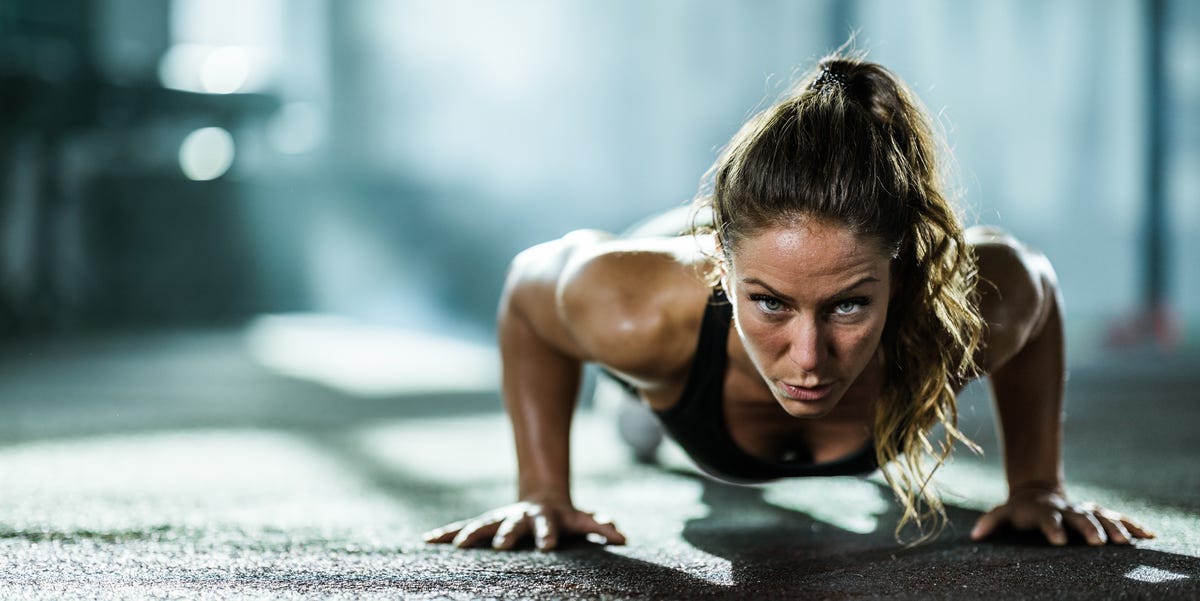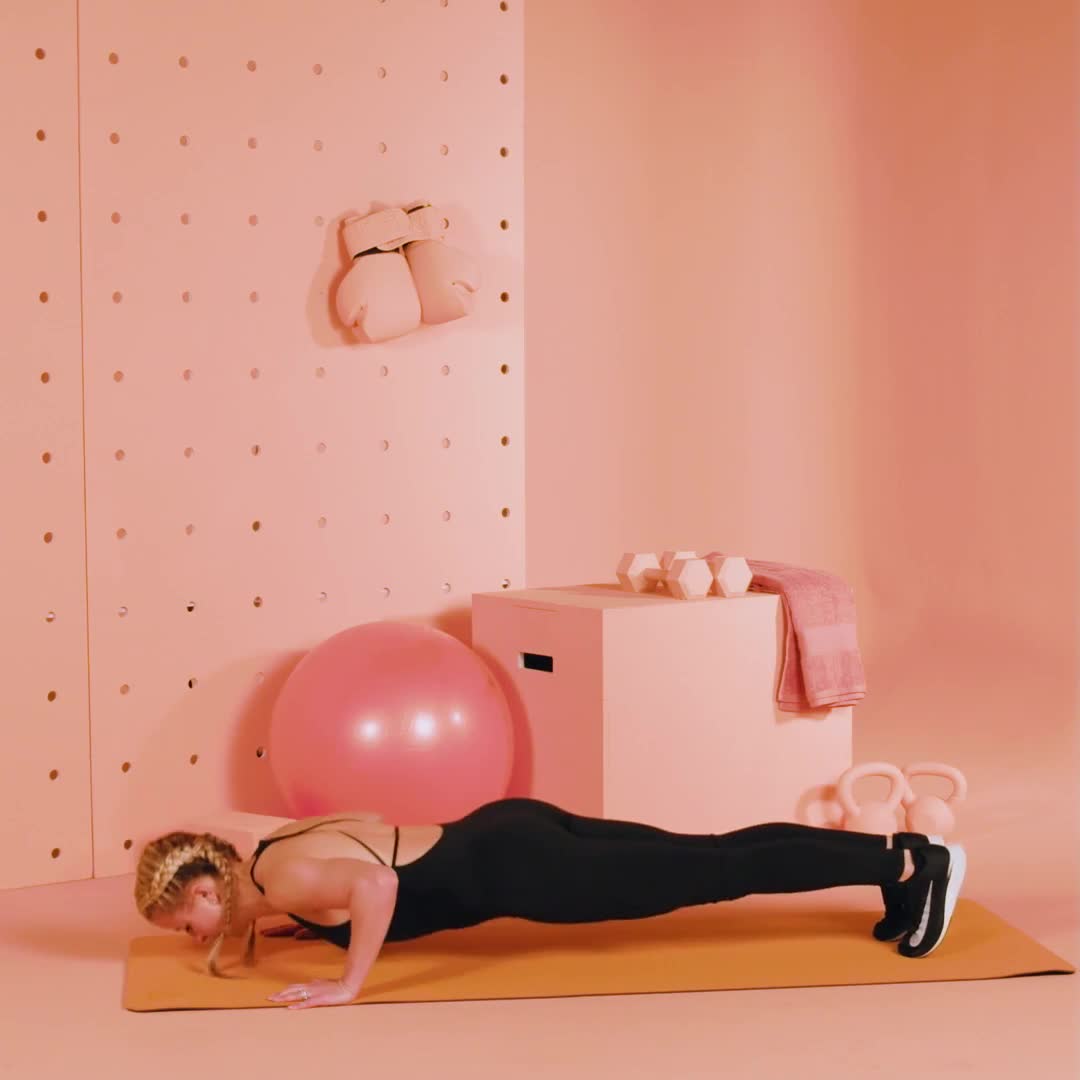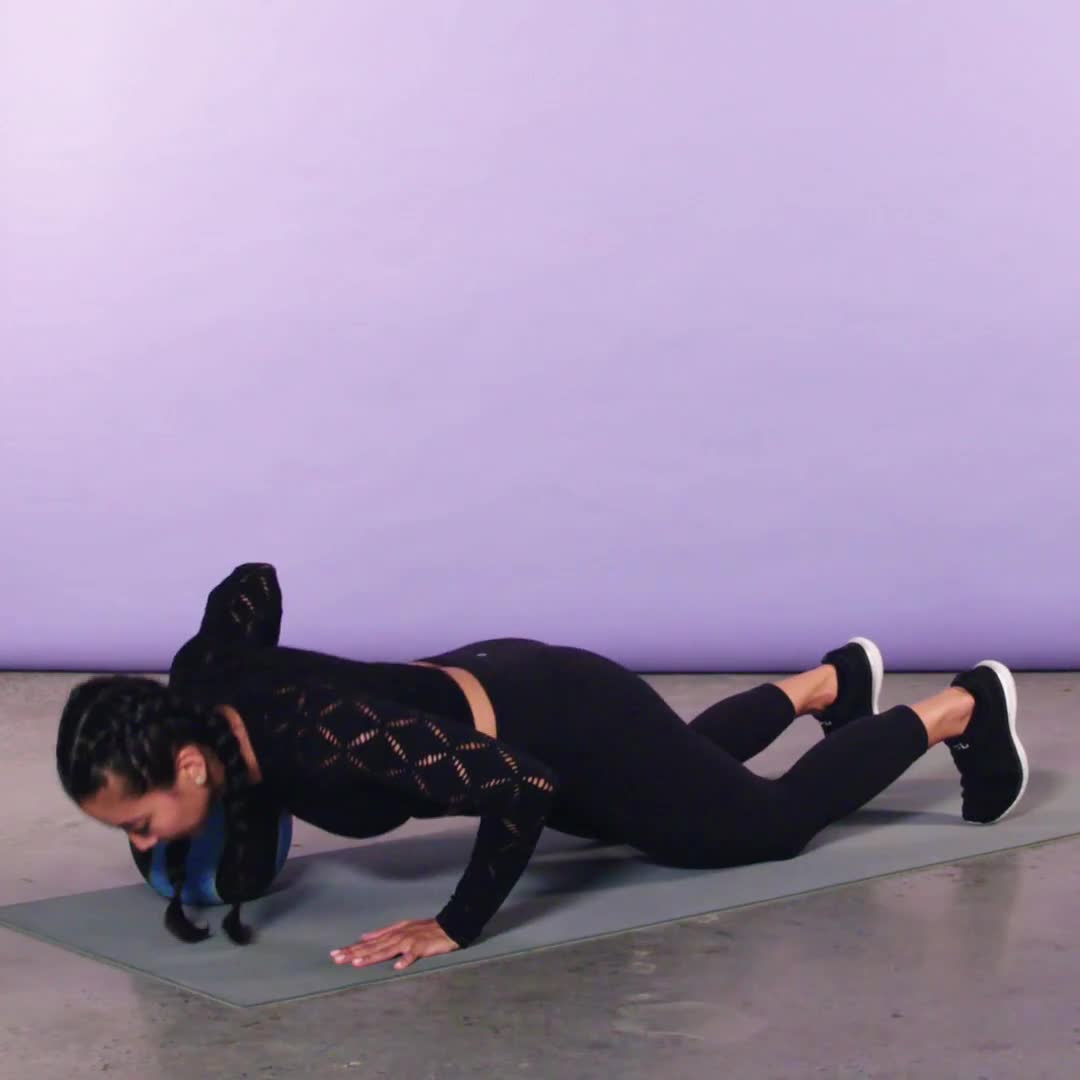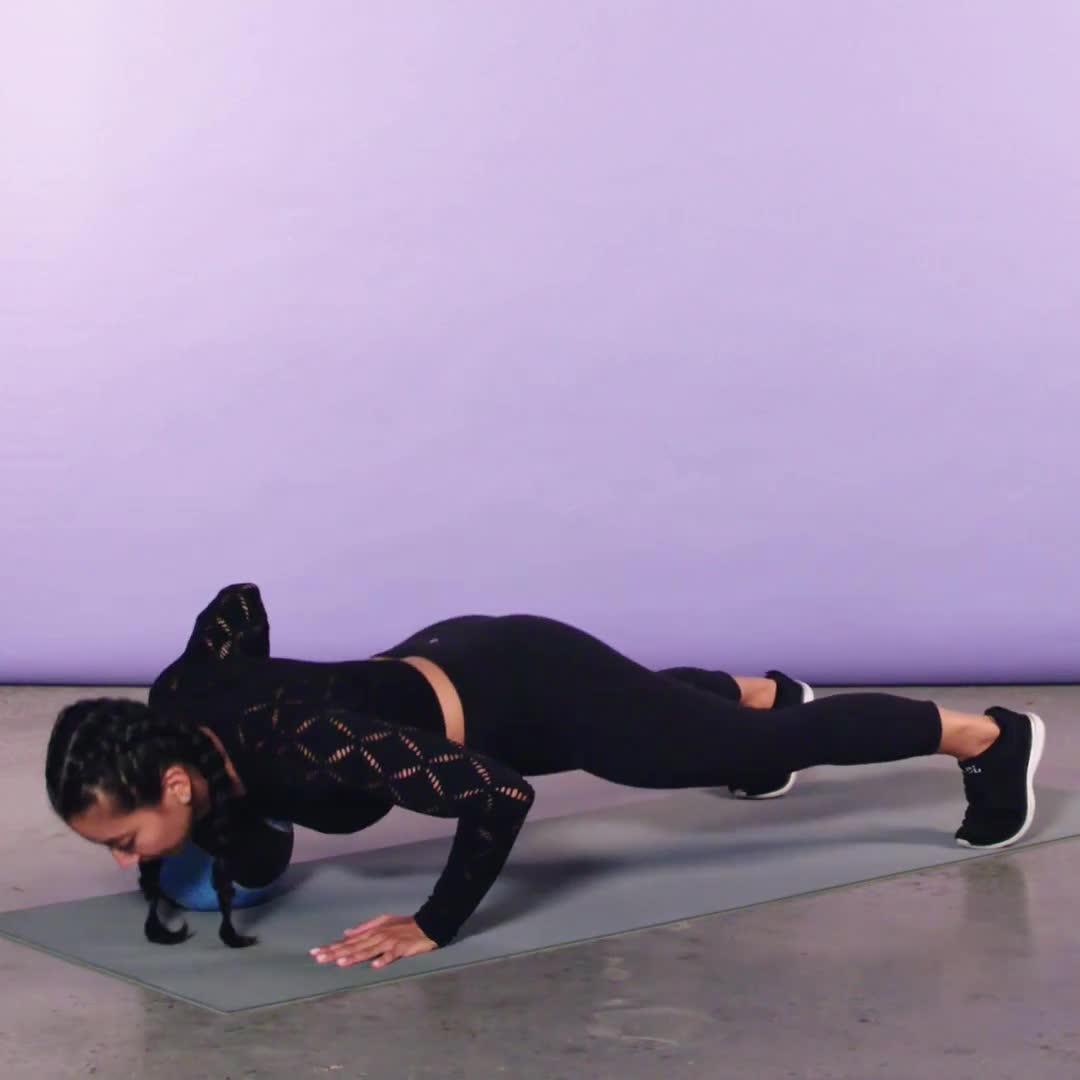There’s been a lot of chatter about push-ups recently. It started with a viral clip of author Mel Robbins’ podcast where orthopedic surgeon and longevity expert Vonda Wright, MD, said that every woman should be able to crank out 11 push-ups. Naturally, the clip led to a new TikTok challenge.
Well, the hype about this move is warranted: “Push-ups are one of the best exercises in existence” because they work the chest, back, shoulders, and upper arm muscles, says Kristie Larson, CSCS, the founder of Cozy Athletics. Of course, they aren’t just an upper body exercise: “When they’re done correctly, they build core stability” too, says WH advisory board member Betina Gozo, CPT. Another plus? You can do push-ups anywhere—from your favorite corner of the gym, to your hotel room on vacation.
Meet the experts: Kristie Larson, CSCS, is a trainer and the founder of Cozy Athletics based in New York City. Betina Gozo, CPT, is a certified functional strength coach, Nike Global Trainer, and WH advisory board member.
But to get the full-body benefits of this move, you need to learn how to do them properly. Ahead, find out how to perfect your push-up, as well as a few modifications and variations to add to your routine.
How To Do A Push-Up
How to:
- Start in a high plank position with feet slightly wider than hip-width apart and thumbs positioned right outside of the chest. Engage core and maintain a neutral spine with gaze between your hands.
- Lower down, elbows pointing out at 4:30 and 7:30. (Don’t let elbows flare out, but don’t keep them too narrow, either.)
- Push into hands to press back up. That’s 1 rep.
Push-Up Modifications
If a full push-up is too challenging (or requires you to compromise form), try a couple regression options:
- Incline push-up: Place hands on a box or bench. Keep your body in a straight line and engage core to rise back up.
- Kneeling push-up: Start on all fours and walk hands forward so your spine is in a straight line from knees to head with hands below shoulders. Engage core, bend elbows, and lower your body down. Push through hands and rise back up.
If you can hold a stable, neutral spine and engage your core throughout the full range of motion for eight reps, it’s time to level up, Larson says.
How To Add Push-Ups Into Your Workout
Start by adding three sets of 5 to 10 incline push-ups with 30 to 60 seconds of rest in between to your full-body or upper-body workouts, Gozo says. When you feel strong enough to move to full push-ups, try to incorporate three sets of 5 with 30 to 60 seconds of rest in between. Then, slowly work your way up to 10 or 15 reps (with proper form).
When you’re ready for something a bit more advanced, try a superset (a.k.a. grouping two exercises together back to back with no rest) by combining push-ups with a pulling movement like renegade rows or pull-ups, Gozo says.
Muscles Worked During A Push-Up
Push-ups create tension and build strength throughout the full body, which includes:
- Chest (pectorals)
- Shoulders (deltoids and anterior deltoids)
- Arms (triceps)
- Lower body (quadriceps, glutes, and hamstrings)
- Abdominals
Benefits Of Push-Ups
- They’re versatile. All this move requires is your own bodyweight and a small bit of floor space—so you can do them at the gym, on vacation, at a park, or wherever you please, Larson says.
- They work the full body. Push-ups help you create tension throughout your whole body and support your own body weight through a full range of motion, Larson says. Since it works the muscles in your chest and upper back, it can help improve and maintain proper body positioning, spinal alignment, and posture.
- They challenge the core. You may not think of a push-up as a core exercise, “but that’s the foundation of it,” says Larson, noting push-ups are essentially a moving plank. “We have to be able to create that stability in our trunk in order to be able to move the load with our arms.”
- They involve the mind-body connection. “You need to be fully aware of your body and the way that different segments are moving” to reap the biggest benefits, says Larson.
- They build confidence. “There’s this myth that women don’t have strong upper bodies,” Larson says. “Working on push-ups really challenges that narrative in the way that we think about our own strength.”
10 Push-Up Variations To Try
Once you learn how to do a full push-up the right way, there are endless iterations to play with. Here are 10 to get you started:
1. Hand-Release Push-Up
How to:
- Start in a high plank with hands shoulder-width apart and feet hip-width apart, your body forming a straight line from head to heels.
- Keep core tight and bend elbows to lower your body all the way down to the floor.
- At the bottom, allow your torso to rest on the floor as you lift your hands a couple inches off your mat.
- Press back to start. That’s 1 rep.
2. Close-Grip Push-Up
How to:
- Start in a high plank with hands directly under chest instead of out to the sides.
- Lower body, elbows narrow and pointing toward feet, with biceps close to your body.
- Press back to start. That’s 1 rep.
3. One-Hand Elevated Push-Up
How to:
- Start in a high plank with one hand on a yoga block or elevated surface. (Note: Drop to knees for a modified version.) Engage core, keep legs straight, and hips level.
- Slowly lower toward the floor, then stop when elbows get to 90 degrees.
- Press back to start. That’s 1 rep.
4. Wide Push-Up
How to:
- Start in a high plank with hands slightly wider than shoulder-width apart and feet together.
- Keep core tight and bend elbows to lower your body toward the floor.
- Press back to start. That’s 1 rep.
5. Triangle Push-Up
How to:
- Start in a high plank with hands close together under your chest so your thumbs and forefingers form a triangle on the floor.
- Lower down with elbows pointing toward feet and biceps close to your body.
- Press back to start. That’s 1 rep.
6. Sliding Push-Up
How to:
- Start in a high plank with hands about shoulder-width apart and a slider underneath each palm.
- Keep core tight, slide hands to the side, and immediately lower your body toward the floor.
- Press back to start, sliding hands back in. That’s 1 rep.
7. Push-Up With Plank Jack
How to:
- Start in a high plank with shoulders stacked above wrists and sliders under toes.
- Glide feet out wide to the sides and lower your body down into a push-up at the same time.
- Press back to start, sliding feet back in. That’s 1 rep.
8. Knee Tuck Push-Up
How to:
- Start in a high plank with shoulders stacked over wrists and sliders underneath feet.
- Engage core and bend knees to glide feet forward until your thighs hit your chest.
- Press back out to start and complete a push-up. That’s 1 rep.
9. Medicine Ball Push-Up
How to:
- Start in a modified plank with knees on floor and a medicine ball under one hand.
- Slowly bend elbows and lower your body down.
- Once your arm is at a 90-degree angle, press back to start. That’s 1 rep.
- Repeat on other side.
10. Medicine Ball Push-Up Shuffle
How to:
- Start in a high plank with a medicine ball under one hand.
- Do a one-hand elevated push-up, then switch sides by rolling the ball across the mat to rest under your other palm. That’s 1 rep.
- Repeat on other side.
Kristine Thomason is a writer and editor with nearly a decade of experience creating content for print and digital publications. Previously, she was the health and fitness director at mindbodygreen, and the fitness and wellness editor at Women’s Health. Kristine’s work has appeared in Men’s Health, Travel + Leisure, Health, and Refinery29, among others. She holds a journalism degree from New York University, and is certified in personal training by the National Academy of Sports Medicine (NASM).
Read the full article here














